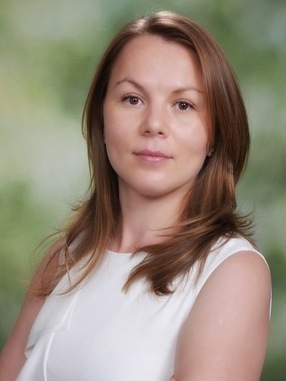BME Seminar: Mechanisms of Bone Blood Flow Regulation : A Critical but Poorly Understood Problem, Dr.Adina Draghici, Spaulding Rehabilitation Hospital
12:00 p.m. to 1:00 p.m.

Dr.Adina Draghici, Faculty Candidate
Instructor
Spaulding Rehabilitation Hospital/Harvard Medical School
MECHANISMS OF BONE BLOOD FLOW REGULATION: A CRITICAL BUT POORLY UNDERSTOOD PROBLEM
Abstract: Bone is a highly vascularized tissue, with an extensive vascular network which requires appropriate regulation to maintain skeletal integrity. Despite the critical importance of blood flow to bone health, the mechanisms regulating bone vasculature are still poorly understood, with exceedingly little research in humans. Using a novel custom-made near infrared spectroscopy (NIRS) device, I have established for the first time the role of key mechanisms that regulate bone blood flow control in young healthy adults. My work is based on the broad hypothesis that the primary regulators of blood flow to bone do not differ from other vascular beds. All vascular beds regulate tissue blood flow via dilation and constriction of the resistance arteries, essentially altering blood vessel diameter via vascular smooth muscle relaxation and constriction in response to stretch (myogenic vasodilation/vasoconstriction) to maintain flow constant. Furthermore, vascular smooth muscle dilation occurs in response to local release of the endothelium-derived relaxing factor nitric oxide (NO) with animal models indicating that NO-mediated vasodilation is a primary regulator of bone blood flow. In addition, the bone vasculature is richly innervated by an extensive network of sympathetic nerves that appear to have an active role (sympathetic vasoconstriction) in controlling blood flow to bone. My recent work demonstrates that in young healthy adults, myogenic control, NO-mediated vasodilation, and sympathetic vasoconstriction serve a functional role in the tibial bone vasculature, but with distinct differences from the skeletal muscle. These key mechanisms have different magnitudes and times courses in the tibial bone compared to the whole leg vasculature, underscoring the importance of directly investigating blood flow control to bone. This provides a foundational background of bone blood flow regulation in humans and sets the stage for exploring the critical role of blood flow to bone health and bone pathologies. My goal is to extend this work to investigate the effect of aging and disease on vascular regulation in bone and to explore the relation between altered bone blood flow control and osteoporosis. Understating the vascular underpinnings of bone loss could lead to novel targeted therapeutic interventions not previously considered that will greatly improve bone health and prevent osteoporosis in bone pathologies.
Biography: Dr. Adina Draghici is a biomedical engineer with a strong interest in integrative human physiology with a focus on bone vascular function and its implications for bone pathophysiologies. After completing her PhD at Northeastern University, Dr. Draghici joined the Cardiovascular Laboratory at Spaulding Rehabilitation Hospital and the Department of Physical Medicine and Rehabilitation at Harvard Medical School as a postdoctoral fellow in 2017 and was promoted to Instructor in 2021. Dr. Draghici’s early research work was on biomechanics of bone and afterwards she began exploring the physiologic vascular underpinnings of bone health. Dr. Draghici was the recipient of a postdoctoral fellowship by the Paralyzed Veterans of America Research Foundation and a fellowship award from the Ellen R. and Melvin J. Gordon Center for the Cure and Treatment of Paralysis. In addition, she was instrumental in obtaining an exploratory NIAMS R21 grant that directly derived from her prior research and funded her work exploring mechanisms of bone blood flow control.
Dr. Drahici’s work is critical to understanding the role of vascular function in skeletal integrity and will potentially open new avenues for treatment of numerous bone loss conditions. As a biomedical engineer with training in human physiology and vascular control, Dr. Draghici has a truly interdisciplinary set of skills ranging from bone biomechanics to bone vascular control to integrative physiology to skeletal optical imaging that will allow her to significantly contribute, if not define the field of bone vascular control in humans.
For a zoom link to this seminar, please contact igjencaj@wpi.edu